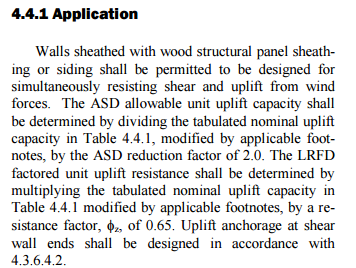Hi All,
I am designing a house in a 110mph, exposure C zone, so we are designing per the WFCM. As always we have specfied hold downs at the ends of shear walls for the architect. The architect has posed a question back to us, asking if we can get rid of the hold downs and increase the sill plate anchorage, they claim other engineers hasve done this for them.... Am I missing something here? We have thousands of lbs of tension at these hold downs and feel that hold downs at the shear wall corners is the right answer. Anyone had this request/pushback in the past?
Thanks in advance.
I am designing a house in a 110mph, exposure C zone, so we are designing per the WFCM. As always we have specfied hold downs at the ends of shear walls for the architect. The architect has posed a question back to us, asking if we can get rid of the hold downs and increase the sill plate anchorage, they claim other engineers hasve done this for them.... Am I missing something here? We have thousands of lbs of tension at these hold downs and feel that hold downs at the shear wall corners is the right answer. Anyone had this request/pushback in the past?
Thanks in advance.



![[bigsmile] [bigsmile] [bigsmile]](/data/assets/smilies/bigsmile.gif)